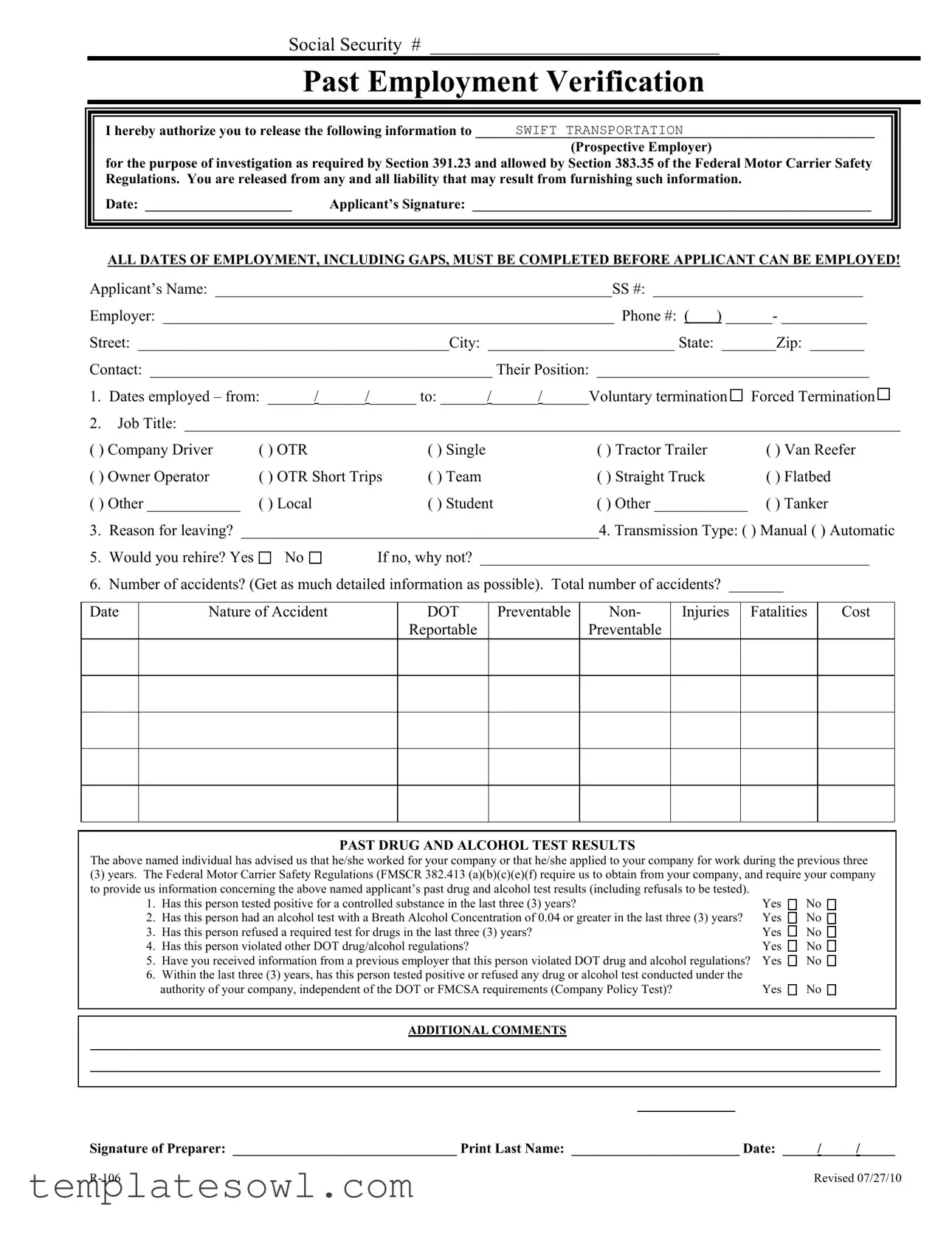What is the purpose of the R 106 form?
The R 106 form is used to authorize a prospective employer to obtain verification of an applicant’s past employment and drug/alcohol testing history. This form ensures compliance with the federal regulations that govern the safety and qualifications of commercial drivers.
Who needs to fill out the R 106 form?
The applicant seeking employment in the commercial driving industry must complete the R 106 form. This includes providing relevant information about their previous employment and authorizing past employers to release details to the new potential employer.
What kind of information is required on the R 106 form?
The form requests the applicant's personal details, including their Social Security number, past employment history, job titles, reasons for leaving previous jobs, and details regarding previous drug and alcohol tests. All dates of employment, including any gaps, must be completed to move forward with employment requirements.
Why is it crucial to list all employment dates, including gaps?
Listing all employment dates, including gaps, is essential because the federal regulations require a complete employment history for verification purposes. This thoroughness helps ensure that the prospective employer can assess the applicant’s qualifications accurately and make informed hiring decisions.
What happens if an applicant has a positive drug test?
If an applicant tests positive for a controlled substance or has a Breath Alcohol Concentration of 0.04 or greater in the last three years, that information will be disclosed to the prospective employer. This could significantly impact the applicant's chances of getting hired as it raises compliance concerns with federal safety regulations.
What is the significance of the "Would you rehire?" question?
This question provides insight into the applicant's past performance and reliability. A negative response can signal potential issues concerning the applicant's work ethic, behavior, or qualifications, making employers cautious about proceeding with hiring.
How does the form protect previous employers?
The R 106 form includes a liability release that protects the previous employers from any legal repercussions resulting from sharing information about the applicant's employment history and drug and alcohol test results. This encourages honesty and transparency during the verification process.
What kind of accidents need to be reported on the R 106 form?
The applicant must provide details about all accidents, including the total number, the date of each accident, the nature of the incident, and whether it was preventable or resulted in injuries or fatalities. This information is crucial for assessing driving competency and safety considerations.
Is it mandatory for employers to provide information requested on the R 106 form?
Yes, under federal regulations, employers are required to provide the information requested about an applicant’s past employment and drug and alcohol test records. This is to ensure that prospective employers have all necessary information to evaluate the qualifications and safety history of commercial drivers accurately.
What should applicants do if they have questions about the R 106 form?
If applicants have questions about filling out the R 106 form or require clarification on any section, they should reach out to the prospective employer or a designated HR representative. It’s important to fully understand the form to ensure accurate and truthful information is provided.



 Forced Termination
Forced Termination 


 No
No 
